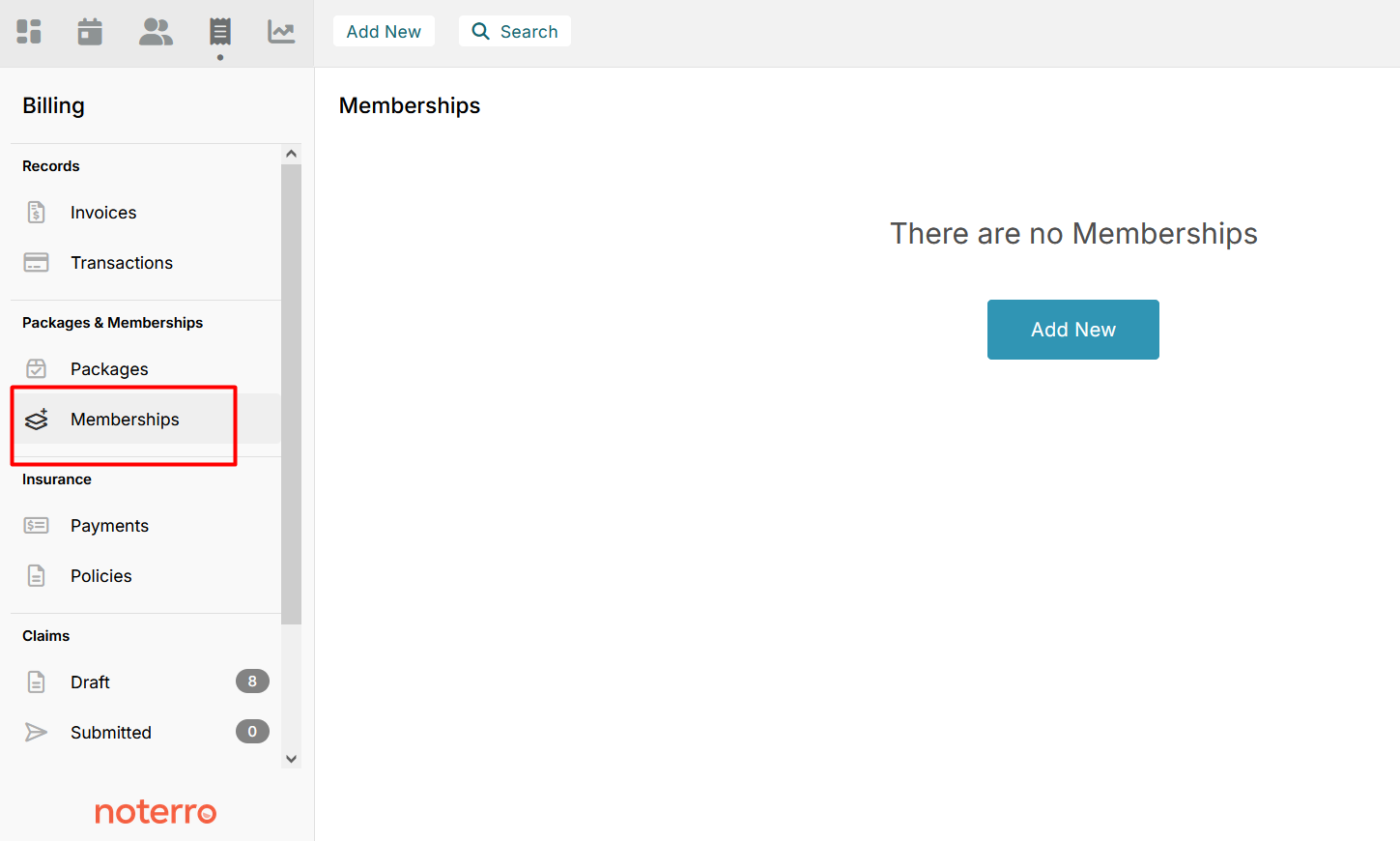End-of-Year Sale: Subscribe by December 31 to Get 3 Months Free!
Learn More
Table of Contents

Experience Better Practice Management Today!
Starting at $28.05/month
No Credit Card Required

Experience Better Practice Management Today!
Starting at $30/month
No Credit Card Required
Patient retention is a persistent challenge for chiropractic clinics. While many patients seek care for immediate pain relief, few commit to ongoing treatment. This inconsistency affects not only their health outcomes but also the financial stability of practices.
A well-structured membership program can bridge this gap. By offering predictable costs, structured care plans, and exclusive benefits, it keeps patients engaged for the long term.
According to the American Chiropractic Association, practices with memberships report higher patient retention rates. This makes such plans one of the most effective patient retention strategies in the industry.
This article explores how this program improves patient retention, how to design a one for your clinic, and how to integrate it into your practice efficiently.
It is a subscription-based care model where patients pay a recurring monthly or annual fee in exchange for ongoing services.
Unlike traditional pay-per-visit models or insurance-based plans, membership plans provide a structured and affordable way for patients to access routine care without unexpected costs.
Many clinics operate on a pay-per-visit model, where patients pay at the time of service. Others rely on insurance reimbursements, which can involve lengthy processing times and unpredictable payouts.
These plans eliminate these pain points by offering simple, transparent pricing that benefits both patients and clinics.
| Model | Payment Structure | Patient Commitment | Revenue Predictability |
| Pay-Per-Visit | Patients pay for each session separately | Low - Patients may stop coming after symptoms improve | Unstable - Income fluctuates based on patient visits |
| Insurance-Based | Billed through insurance, with co-pays and deductibles | Medium - Patients may delay visits due to out-of-pocket costs | Unpredictable – Revenue depends on insurance reimbursement |
| Membership-Based | Monthly or annual fee covering a set number of visits | High - Patients feel committed to their membership | Stable - Recurring revenue creates financial predictability |
One of the biggest advantages of a membership program is that it encourages long-term engagement. Instead of patients dropping off after a few visits, it promotes regular care, build trust, and create financial stability for your practice.
Cost uncertainty is one of the biggest reasons patients discontinue care. Unexpected expenses can deter them from booking follow-up visits, even when they need them. Membership programs eliminate this concern by offering a fixed, predictable fee that makes care more accessible.
Many patients only visit a chiropractor when they are experiencing pain. However, the care is most effective when it is ongoing and preventative, not just reactive.
A strong relationship between practitioners and their patients is essential for retention. When patients feel a sense of connection and trust, they are more likely to stay loyal to a clinic. Memberships help facilitate this by encouraging frequent visits and creating a sense of exclusivity.
Loyal patients not only return for care—they also refer friends and family, further expanding the clinic’s reach.
No-shows and last-minute cancellations are frustrating and costly for clinics. Prepaid membership programs significantly reduce these issues.
Beyond patient retention, membership programs increase the long-term financial value of a practice. If you ever decide to sell or expand, a predictable, recurring revenue model makes your business more attractive to investors or buyers.
Helpful Read: How to Launch a Successful Chiropractic Practice in 2025
A successful program requires more than just offering a set number of visits for a fixed fee. It needs to be strategically designed to appeal to patients, provide real value, and ensure long-term financial sustainability for your clinic.
Setting up a membership program involves three key steps:
Each of these elements plays a crucial role in ensuring your program attracts patients, encourages retention, and remains profitable over time.
Pricing is one of the most critical factors in determining whether your program succeeds. If it’s too low, your clinic may lose money. If it’s too high, patients may not see enough value to commit. Finding the right balance is essential.
To create a sustainable pricing model, consider the following factors:
Different patients have different needs, so offering multiple tiers allows you to cater to a wider audience. SOme types of plans you can offer include:
Once you have defined your pricing structure, the next step is to outline what each membership tier includes. Your plan should provide real, tangible value so patients feel they are getting more than what they would pay per visit.
The core services should align with common treatments that your patients need. These can include:
To make your program even more attractive, consider including extra perks such as:
Here’s something helpful: Why Patients Value Complementary Services in Chiropractic Clinics
The key is to offer a combination of essential treatments and bonus perks that enhance the overall experience. This will keep patients engaged and increase the likelihood of long-term membership retention.
A well-structured program should be transparent, easy to understand, and legally compliant. Patients should feel confident in their commitment, knowing exactly what they are getting and what is expected.
Managing a program manually can be time-consuming and prone to errors, especially as your clinic grows. A chiropractic practice management tool simplifies the entire process by automating payments, tracking patient visits, and integrating membership plans with other clinic operations.

Using a comprehensive platform like Noterro, you can:

With Noterro, you can streamline the entire process while eliminating administrative burdens, allowing your team to focus more on patient care.
Whether you’re running a small practice or a multi-location clinic, Noterro’s membership management features help you keep your program running smoothly.
Once your chiropractic membership program is set up, the next step is ensuring long-term engagement and renewals.
A well-designed program not only helps increase patient retention but also strengthens your clinic’s financial health. However, to ensure its long-term success, you must strategically manage pricing, communication, performance tracking, and marketing efforts.
Below are the best practices to help you maximize retention, maintain engagement, and keep your program profitable.
Pricing in chiropractic plays a critical role in attracting and retaining members. If your membership is priced too low, you risk undermining profitability. If it’s too high, potential prospects may not see the value and opt out.
One of the biggest reasons patients cancel memberships is due to unclear policies regarding renewals, cancellations, and refunds. To avoid frustration and ensure long-term retention, your terms should be easy to understand and clearly communicated upfront.
To keep patients engaged, you must stay in touch regularly and provide continuous value. Without ongoing engagement, even loyal patients may lose interest and let their memberships lapse.
Here’s how you can keep members engaged and informed:
A successful membership program is not static—it should evolve based on performance data and patient feedback. By regularly monitoring key metrics, you can identify trends, adjust pricing, and improve offerings.
Here are some key performance indicators (KPIs) to track:
These programs can lead to an increase in patient visits, which is great for revenue but can also create scheduling challenges if not managed properly. Overbooking issues or long wait times can negatively impact the patient experience, leading to cancellations.
Even the best program won’t succeed if patients don’t know about it. Marketing plays a crucial role in educating potential members, driving sign-ups, and keeping existing ones engaged.
Marketing within your clinic is one of the most effective ways to promote memberships, as existing patients already trust your services.
Also Read: How to Create a Marketing Strategy That Drives Growth for a Chiropractic Business
Beyond in-clinic promotions, you should also market your program online to reach new patients and drive sign-ups.
A well-structured chiropractic membership program does more than just increase patient retention—it builds long-term relationships, financial stability, and a thriving practice. By offering predictable pricing, ongoing value, and exclusive perks, you create a program that patients want to stay in, not just sign up for.
But success doesn’t happen by chance. Clear pricing, transparent terms, and a seamless management system are key to keeping members engaged. When paired with strong internal marketing, personalized communication, and a proactive retention strategy, your program becomes an essential part of your clinic’s growth.
Now is the time to take action. Patients are looking for affordable, convenient, and effective ways to prioritize their health. Such a program makes it easy for them to commit—while giving your practice a steady stream of recurring revenue.
Ready to build a high-retention membership program? With Noterro, you can automate renewals, track patient visits, and streamline membership management!
Attract new patients by optimizing your online presence, leveraging local SEO, running targeted ads, and offering promotions. Referral programs and community outreach also help grow your patient base.
Membership plans boost patient retention, provide predictable revenue, and encourage consistent care. They simplify pricing, enhance trust, and make care more accessible.
Patient retention refers to keeping patients engaged with ongoing care. It ensures steady revenue, improves patient outcomes, and builds long-term relationships for a thriving practice.
Tags



